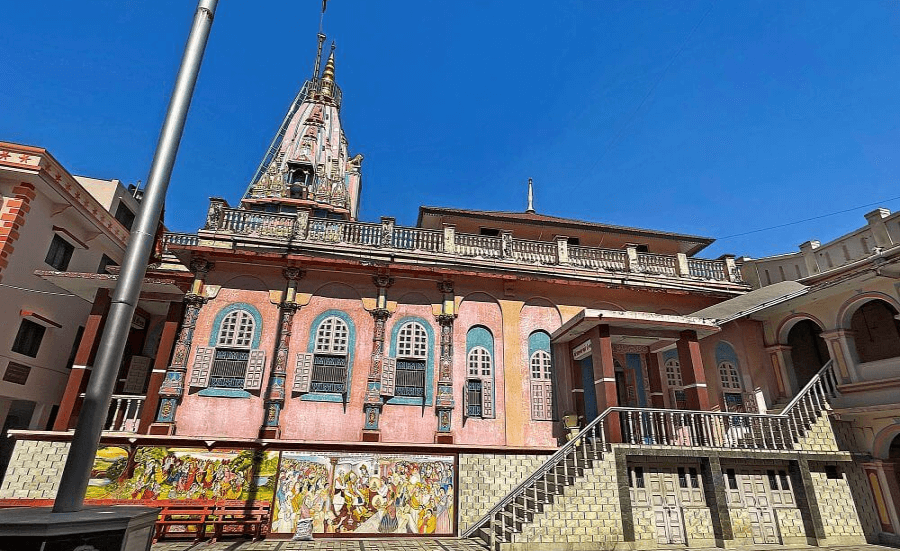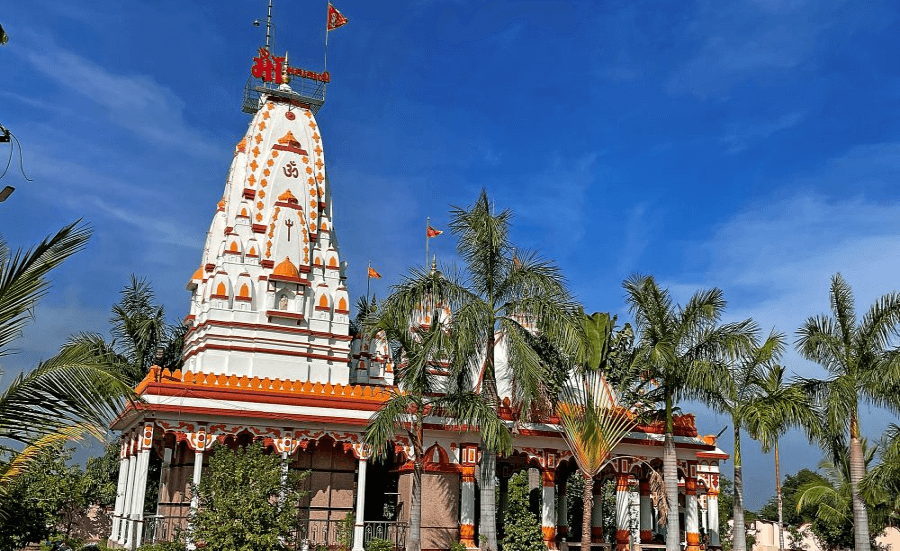
 Known as the ‘Mini Pavagadh Temple’ of Gujarat, the Mahakali Mata Temple is situated in Bhat Gam (village) in Surat district. While the Pavagadh Temple in Panchmahal district is recognised as one of the 51 Shakti Peethas and the foremost shrine of Kali Mata in Gujarat, this temple in Bhat village is regarded as the second sacred abode of the goddess. Revered as a powerful deity, the temple is believed to grant offspring to childless couples who earnestly pray here, fulfilling their wishes and providing solace to devotees. Hundreds of worshippers visit the temple regularly to seek blessings.
Known as the ‘Mini Pavagadh Temple’ of Gujarat, the Mahakali Mata Temple is situated in Bhat Gam (village) in Surat district. While the Pavagadh Temple in Panchmahal district is recognised as one of the 51 Shakti Peethas and the foremost shrine of Kali Mata in Gujarat, this temple in Bhat village is regarded as the second sacred abode of the goddess. Revered as a powerful deity, the temple is believed to grant offspring to childless couples who earnestly pray here, fulfilling their wishes and providing solace to devotees. Hundreds of worshippers visit the temple regularly to seek blessings.
The temple’s origin is rooted in a mythological legend from around 500 years ago. According to this legend, King Bhrigu ruled near the Arabian Sea and established the town of Bhrigu Nagari, which is now the present-day Bhagwa village. 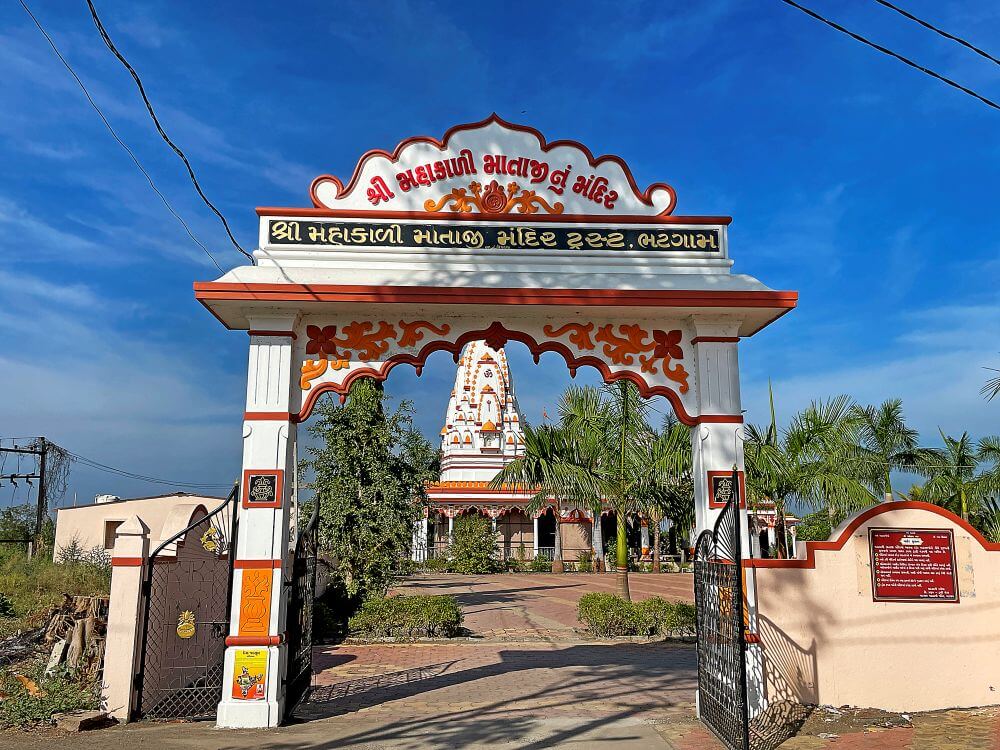 Despite his expanding empire and reputation as a powerful ruler, King Bhrigu was deeply troubled due to the absence of an heir. He and his queen sought remedies from various physicians and sages and performed numerous rituals, but all efforts were in vain.
Despite his expanding empire and reputation as a powerful ruler, King Bhrigu was deeply troubled due to the absence of an heir. He and his queen sought remedies from various physicians and sages and performed numerous rituals, but all efforts were in vain.
In his kingdom lived an elderly woman from an Ahir family. (Ahirs are a non-nomadic Gujarati people with extensive traditional knowledge. They claim themselves to be the descendants of Lord Krishna.) That woman sent a message to the king, suggesting a specific ritual of worship to the goddess. She assured him that the goddess would bless him with a child. Upon the king’s consent, the woman brought a small idol of the goddess to the palace and performed a ceremonial puja with betel nuts. Shortly thereafter, the queen conceived and gave birth to a son.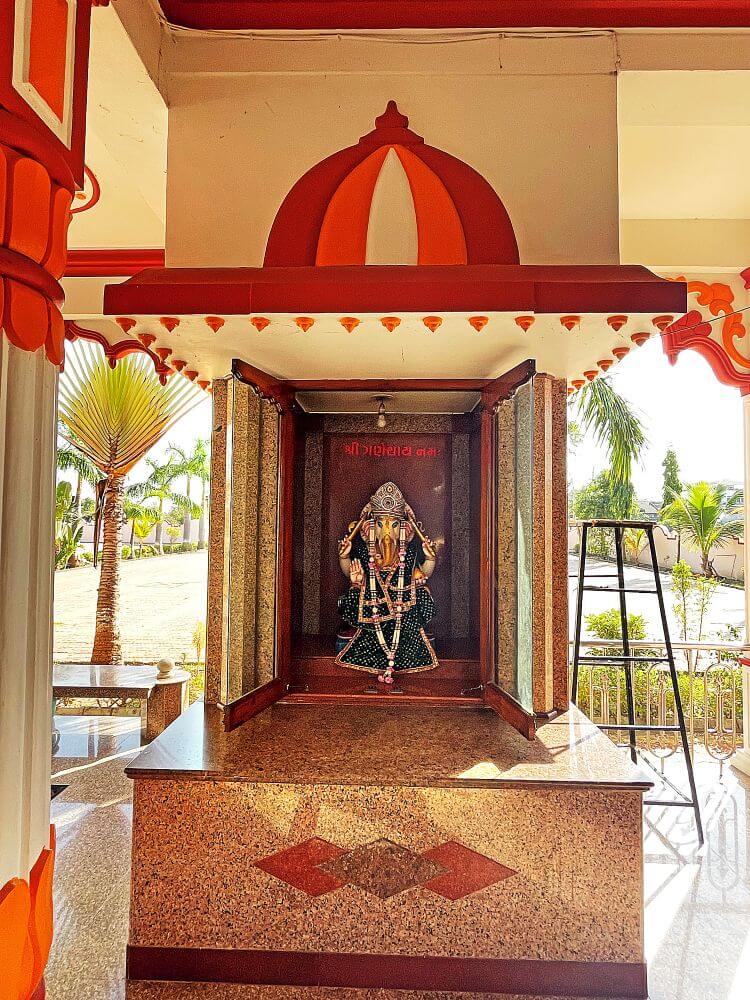
Grateful for this blessing, King Bhrigu began worshipping the goddess devoutly. Pleased by his devotion, the goddess appeared in his dream and instructed him to construct a temple in front of the palace and hang a bell there. She promised to protect the kingdom and respond to any threat or distress signaled by the bell. Accordingly, the king built a temple and installed the bell.
One day, the prince visited the temple and, out of curiosity, rang the bell. True to her promise, the goddess appeared, accompanied by the sea god. However, as no danger was present, the sea god grew furious. In his wrath, he caused devastation in the kingdom. Repentant, the king begged the goddess for forgiveness. Angry, she left the palace and settled in her current location in Bhat village, where her self-manifested (swayambhu) idol resides. Over time, a temple was built at this site.
Located just 6 km from Olpad, the temple is situated amidst a serene setting, with a large lotus pond nearby. The temple complex is accessible via a pathway running along the pond. The entrance features a grand arched gateway with intricate designs. Adjacent to the temple is a small Hanuman shrine.
The temple consists of a mukhmandap (front hall), a large open sabhamandap (assembly hall), an antaral (intermediate hall), and a garbhagriha (sanctum). 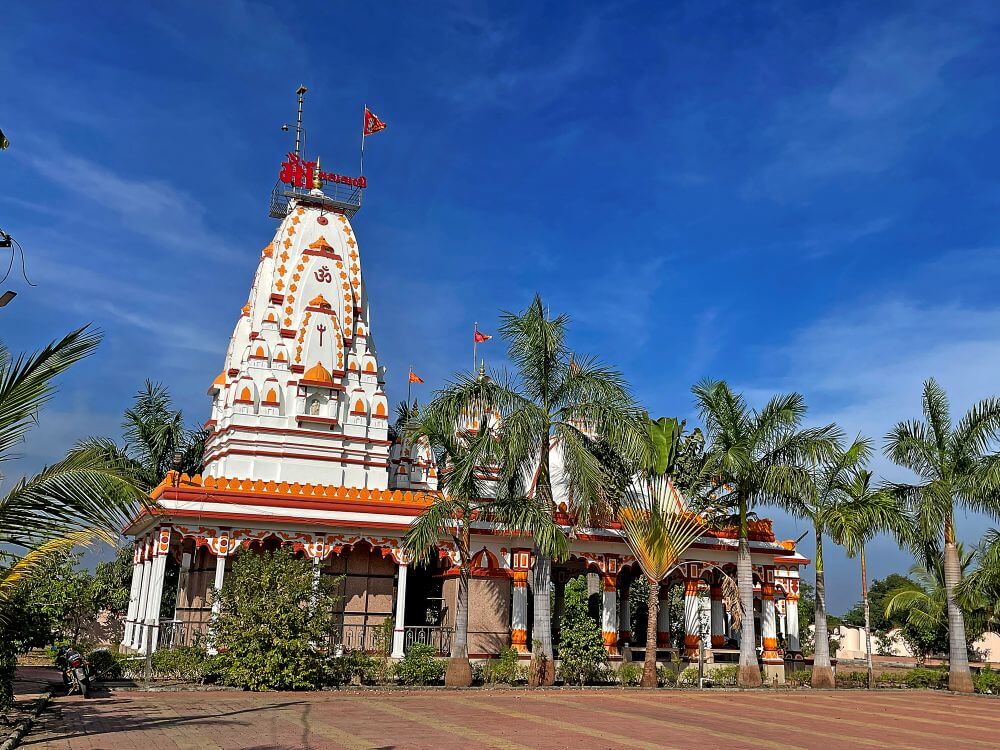 The sabhamandap has a dome-shaped spire, while the garbhagriha features a towering urushringa -style spire with miniature replicas of spires on its main structure. Four small niches on the spire house idols of various deities.
The sabhamandap has a dome-shaped spire, while the garbhagriha features a towering urushringa -style spire with miniature replicas of spires on its main structure. Four small niches on the spire house idols of various deities.
Inside the garbhagriha, at the centre of a raised vajrapitha (platform), stands a beautifully adorned idol of Mahakali Mata wearing a silver crown. On her left is an idol of Umia Mata seated on Nandi, and on her right is an idol of Parvati Mata. A shivlinga with a copper serpent hood is placed near the platform.
This temple serves as an alternative pilgrimage for those unable to visit the Pavagadh temple. While the Pavagadh goddess represents a fierce form, this temple presents her in a serene form. Devotees frequently visit to make vows (navaas), often attaching betel nuts to the statue. This ritual is performed by priests every Sunday, Tuesday, and Thursday. Women are prohibited from entering the temple for five days during menstruation.
Throughout the year, the temple hosts various religious programmes. On Ram Navami, the temple complex becomes the centre of a grand fair, attracting thousands of devotees from nearby areas who come to seek the blessings of the goddess. During the month of Chaitra, a Navchandi Yagna is performed, a significant ritual involving elaborate offerings and prayers. As part of the celebrations, the goddess’s idol is carried in a ceremonial rath yatra (chariot procession), drawing large crowds of devotees who participate with fervent devotion. The Navratri festival is celebrated with great enthusiasm, including a mahaarti where devotees hold lamps during the prayer ceremony.
